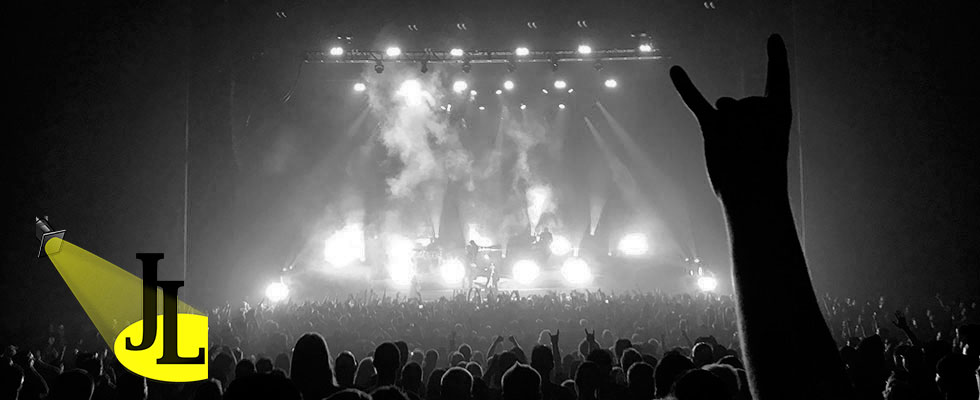
Brand parity is an important component to marketing strategy. At its core, brand parity is aligning your product with the anticipated demands of the consumer by making sure you have the same attributes as rivals in your market. In his paper “Measuring Perceived Brand Parity.” James A. Muncy, from Valdosta State University, defines it as, “the overall perception held by the consumer that the differences between the major brand alternatives in a product category are small.” That statement is important from a marketing perspective because it reminds us that strategically aligning your offerings with what is expected in the marketplace can mitigate potential competitive advantages of your rivals. In venue management, this can be witnessed quite well in heavy “club” markets such as Vegas, Sao Paulo, Montreal, and Berlin where consumers have come to expect items such as VIP/ bottle service, security, scantily clad cocktail servers, top-of-the-line sound systems, impressive light shows and marquee DJs on deck. Club owners are happy to oblige because they know to compete they must “keep up with the Joneses,” or as marketers state – establish brand parity.
This brings us to the other side of brand parity strategy in venue management – if your pockets are deep enough. You can use it to oust competition by creating barriers to entry. This can be witnessed in Las Vegas where resident DJ’s (look at the list below from electronic.vegas) cost tens of thousands of dollars in performance fees alone with many easily cresting the $100,000 mark.
3LAU – Omnia Nightclub
A-Trak – XS, Surrender, Intrigue, Encore Beach Club
Above & Beyond – Hakkasan, Omnia, Wet Republic
Adrian Lux – Encore Beach Club
Alison Wonderland – XS, Surrender, Intrigue, Encore Beach Club
Alesso – XS, Surrender, Intrigue, Encore Beach Club
Afrojack – Hakkasan, Omnia, Wet Republic
Armin van Buuren – Hakkasan, Omnia, Wet Republic
Arty – Drai’s Nightclub, Drai’s Beach Club
Audien – Marquee Nightclub, Marquee Dayclub
Axwell – Light Nightclub, Daylight Beach Club
Baauer – Light Nightclub, Daylight Beach Club
Benny Benassi – Marquee Nightclub, Marquee Dayclub
Bingo Players – Hakkasan, Wet Republic
Borgeous – Hakkasan, Omnia, Wet Republic
Borgore – Marquee Nightclub, Marquee Dayclub, Tao
Brillz – XS, Surrender, Intrigue, Encore Beach Club
BRKLYN – Hakkasan, Omnia, Wet Republic
Burns – Hakkasan, Omnia, Wet Republic
Calvin Harris – Hakkasan, Omnia, Wet Republic
Carnage – Marquee Nightclub, Marquee Dayclub
Cash Cash – Hakkasan, Omnia, Wet Republic
Cedric Gervais – XS, Surrender, Intrigue, Encore Beach Club
Chuckie – XS, Surrender, Intrigue, Encore Beach Club
Clockwork – Light Nightclub, Daylight Beach Club
Dada Life – Hakkasan, Wet Republic
Danny Avila – Hakkasan, Wet Republic
Dash Berlin – Marquee Nightclub, Marquee Dayclub
David Guetta – XS, Surrender, Intrigue, Encore Beach Club
Deadmau5 – XS, Encore Beach Club
Deniz Koyu – Encore Beach Club, Surrender
Deorro – Encore Beach Club
Dillon Francis – XS, Surrender, Intrigue, Encore Beach Club
Dimitri Vegas & Like Mike – XS, Surrender, Intrigue, Encore Beach Club
Diplo – XS, Surrender, Intrigue, Encore Beach Club
DJ Irie – Light, Daylight
DJ Mustard – Marquee Nightclub, Marquee Dayclub
DJ Shift – Drai’s Nightclub, Drai’s Beach Club
DJ Snake – XS, Surrender, Intrigue, Encore Beach Club
Duke Dumont – XS, Surrender, Intrigue, Encore Beach Club
Dyro – Light Nightclub, Daylight Beach Club
Dzeko & Torres – Hakkasan, Wet Republic
EC Twins – Marquee Nightclub, Marquee Dayclub
EDX – XS, Surrender, Intrigue, Encore Beach Club
Eric Prydz – Drai’s Nightclub, Drai’s Beach Club
Eva Shaw – Hakkasan, Wet Republic
FAED – Hakkasan, Omnia, Jewel, Wet Republic
Fedde Le Grand – Encore Beach Club, XS
Ferry Corsten – Marquee Nightclub, Marquee Dayclub
Fergie (DJ) – Hakkasan, Omnia, Jewel, Wet Republic
Flosstradamus – XS, Surrender, Intrigue, Encore Beach Club
French Montana – Marquee Nightclub, Marquee Dayclub
Galantis – Marquee Nightclub, Marquee Dayclub
Gareth Emery – Marquee Nightclub, Marquee Dayclub
Getter – XS, Surrender, Intrigue, Encore Beach Club
Ghastly – Marquee Nightclub, Marquee Dayclub
gLAdiator – Drai’s Nightclub, Drai’s Beach Club
Grandtheft – Surrender
GTA – Hakkasan, Omnia, Jewel, Wet Republic
Hardwell – Hakkasan, Omnia, Jewel, Wet Republic
Heroes x Villains – XS
Hook N Sling – Light Nightclub, Daylight Beach Club
Illenium – Hakkasan, Omnia, Jewel, Wet Republic
Ingrosso – Light Nightclub, Daylight Beach Club
Irie – Hakkasan, Omnia, Jewel, Wet Republic
Jauz – Hakkasan, Omnia, Jewel, Wet Republic
Julian Jordan – Hakkasan, Omnia, Jewel, Wet Republic
Kaskade – Hakkasan, Omnia, Jewel, Wet Republic
Kennedy Jones – Marquee Nightclub, Marquee Dayclub
Krewella – Omnia
LA Leakers – Hakkasan, Omnia, Jewel, Wet Republic
Laidback Luke – XS, Surrender, Intrigue, Encore Beach Club
Lil Jon – Hakkasan, Omnia, Jewel, Wet Republic
Lost Kings – XS, Surrender, Intrigue, Encore Beach Club
Markus Schulz – Marquee Nightclub, Marquee Dayclub
Martin Solveig – Surrender
Madeon – Encore Beach Club
Major Lazer – XS, Surrender, Intrigue, Encore Beach Club
MAKJ – XS, Surrender, Intrigue, Encore Beach Club
Marshmello – XS, Surrender, Intrigue, Encore Beach Club
Martin Garrix – Hakkasan, Omnia, Jewel, Wet Republic
Matoma – Hakkasan, Omnia, Jewel, Wet Republic
Morgan Page – Surrender, Encore Beach Club
Nervo – Hakkasan, Omnia, Jewel, Wet Republic
NGHTMRE – Hakkasan, Omnia, Jewel, Wet Republic
Nicky Romero – XS, Surrender, Intrigue, Encore Beach Club
Ookay – XS, Surrender, Intrigue, Encore Beach Club
Paper Diamond – Surrender
Party Favor – Hakkasan, Omnia, Jewel, Wet Republic
Paul Oakenfold – Marquee Nightclub, Marquee Dayclub
Porter Robinson – Hakkasan, Omnia, Jewel, Wet Republic
Puff Daddy – Hakkasan, Omnia, Jewel, Wet Republic
Quintino – Drai’s Nightclub, Drai’s Beach Club
Robin Schulz – XS, Surrender, Intrigue, Encore Beach Club
RL Grime – XS, Surrender, Intrigue, Encore Beach Club
Ruckus – Marquee Nightclub, Marquee Dayclub
Sander van Doorn – Marquee Nightclub, Marquee Dayclub
Skrillex – XS, Surrender, Intrigue, Encore Beach Club
Slander – XS, Surrender, Intrigue, Encore Beach Club
Stafford Brothers – XS, Surrender, Intrigue, Encore Beach Club
Steve Angello – XS, Encore Beach Club
Steve Aoki – Hakkasan, Omnia, Jewel, Wet Republic
Sultan & Ned Shepard – XS, Surrender, Intrigue, Encore Beach Club
Sunnery James & Ryan Marciano – Hakkasan, Wet Republic
The Chainsmokers – XS, Surrender, Intrigue, Encore Beach Club
Tiesto – Hakkasan, Omnia, Jewel, Wet Republic
Timmy Trumpet – Marquee Nightclub, Marquee Dayclub
Travis Scott – Hakkasan, Omnia, Jewel, Wet Republic
Tritonal – Marquee Nightclub, Marquee Dayclub
Tommy Trash – XS, Encore Beach Club
Ty Dolla $ign – Marquee Nightclub, Marquee Dayclub
Vice – Marquee Nightclub, Marquee Dayclub
Vinai – Marquee Nightclub, Marquee Dayclub
Virgil Abloh – XS, Surrender, Intrigue, Encore Beach Club
WeAreTreo – Hakkasan, Omnia, Jewel, Wet Republic
Wolfgang Gartner – XS
Yellow Claw – XS, Surrender, Intrigue, Encore Beach Club
Zedd – Hakkasan, Omnia, Jewel, Wet Republic
This impressive list demonstrates that if one wanted to start a club on the strip in Las Vegas, they would be extremely hard-pressed to do so as the environment demanded by consumers in this area would force them to meet the venue design, ambiance, and reportedly $1 million Calvin Harris makes each night at Hakkasan. Quite simply, they would need to adopt the brand parity of a market put in place by conglomerates backed by casino money. And if they choose not to, they would be lost in the advertising noise of a collective market working against them.
Obviously, other attributes come into play when launching a venue. You could position yourself in a tighter niche in the EDM world such as trance. You could reduce costs and charge consumers less than the $30-$50 charged by the major-branded clubs. You could even move off of the strip and cater to the locals. However, that is not the point of this post. The lesson here is. When planning, launching and running an entertainment venue, one must forego the blanket advice of many armchair marketers to simply differentiate the brand. Rather, you need to pinpoint what attributes you should (and can afford to) fall in line with to meet the customer expectations your competition has put in place. Only then, should you look for ways to differentiate.









